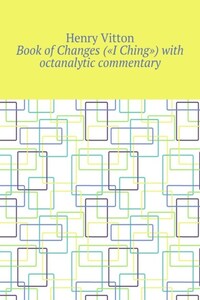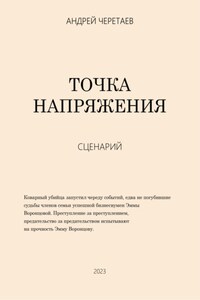The I Ching or Zhou Yi is the earliest Chinese philosophical text. The earliest layer, traditionally dated to c. 700 BC and intended for divination, consists of 64 hexagrams. “The Book of Changes” is the name attached to the “I Ching” in the West.
The book consists of 64 characters – hexagrams, each of which expresses a particular life situation in time from the point of view of its gradual development. Symbols are made up of six lines; the lines indicate successive stages in the development of a given situation. Lines are of two kinds: either solid (they are also called nines), or interrupted in the middle (sixes). The former symbolizes the active state, light, tension (yang), and the latter symbolizes the passive state, darkness, compliance (yin). It is generally accepted that the lines are read from the bottom up; their sequence describes the development of the situation.
Each hexagram can also be represented as a combination of two trigrams. Each hexagram, as well as each line in the hexagram, is accompanied by a set of aphorisms, which should give advice to the fortuneteller.
The modern method of analysis of the psyche “Octanalysis” [1—15] makes it possible, on the basis of scientific data on the human psyche, to write an octanalytic commentary for the Book of Changes.
Octanalysis distinguishes eight instances in a living system (mental states, components of the psyche, vectors, layers of the psyche, vibrational levels, resonant levels, fundamental principles of being) 0-Source, 7-Imagination, 6-Subconscious, 5-Soul, 4-Heart, 3-Irratio, 2-Ratio, 1-Mind. Using the methods of octanalysis, their harmonious, natural, impeccable hierarchy, top to bottom, 0, 7, 6, 5, 4, 3, 2, 1 (in binary 000, 111, 110, 101, 100, 011, 010, 001) was discovered. At any given time, one of these eight instances dominates the living system.
2. The designation of 8 trigrams of Fu Xi
The legendary first emperor of China (Celestial Empire) Fu Xi (2852—2737 BC) created the first eight trigrams (Kun, Qian, Dui, Li, Zhen, Xun, Kan, Gen), fundamental principles of life.
The trigram consists of three horizontal lines, located one above the other. Each of the lines can be a whole horizontal line” – » (strong line, “nine”, “son”) or a horizontal line interrupted in the middle "– -" (weak line, “six”, “daughter”).
Let’s introduce the digital designation of trigrams, which is convenient for converting numbers from binary to decimal. Let us designate in the trigram the whole horizontal line” – » (“nine”) as “1” (“phallus”), and the horizontal line interrupted in the middle “– -” (“six”) as “0” (“vagina”). In the numerical designation of the trigram, for example “011”, the digit on the left “011” indicates the lower line of the trigram, and the digit on the right “011” indicates the upper line. Then the designation of eight trigrams will look like:
000 (Kun, mother);
111 (Qian, father);
110 (Dui, third daughter);
101 (Li, second daughter);
100 (Zhen, first son);
011 (Xun, first daughter);
010 (Kan, second son);
001 (Gen, third son).
Names of trigrams are given in parentheses.
The eight instances of the psyche, studied in octanalysis, uniquely correspond to the eight trigrams of Fu Xi:
0-Source / Kun, mother;
7-Imagination/Qian, father;
6-Subconscious/Dui, third daughter;
5-Soul/Li, second daughter;
4-Heart/Zhen, first son;








